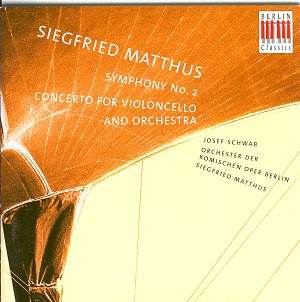 Composer: Alban Berg
Composer: Alban Berg
Works: Gurrelieder
Performers: Karita Mattila (soprano), Thomas Moser (tenor), Philip Langridge (tenor), Thomas Quasthoff (bass-baritone), Rundfunkchor Berlin, MDR Rundfunkchor Leipzig, Berlin Philharmonic Orchestra, Sir Simon Rattle
Recording: Recorded September 2001, Philharmonie, Berlin
Label: EMI Classics
Alban Berg’s Gurrelieder stands as a monumental bridge between late Romanticism and the avant-garde, a sprawling cantata that encapsulates passion, despair, and the eternal struggle against fate. Premiered in 1911, the work draws on the poetic cycle by Jens Peter Jacobsen, presenting a narrative steeped in mythological and existential themes. Sir Simon Rattle’s interpretation, recorded shortly after the tragic events of September 11, 2001, becomes not merely a performance but a poignant act of resilience, resonating with the collective psyche of a shaken world.
Rattle’s approach to Gurrelieder reveals an astute awareness of the work’s intricate tapestry. The orchestral prelude unfolds with glistening clarity, the crystalline arpeggios sparkling as they establish a sonic landscape that is both lush and transparent. Rattle’s assertion that the work is “the most gigantic chamber music ever written” is evident in his attention to detail; every nuance, every delicate inflection of Schoenberg’s often complex scoring reveals the orchestra’s mastery. The Berlin Philharmonic, under Rattle’s direction, demonstrates a remarkable sensitivity, capturing the myriad shades of emotion present in the score.
Thomas Moser as Waldemar delivers a performance of notable eloquence, particularly in the initial love song, where his heartfelt expression at “Rest, my senses, rest!” captivates and establishes a profound emotional connection. The interplay between Moser and Karita Mattila, who sings the role of Tove, is a high point of the recording. Mattila’s beguiling tone and her nuanced response to Waldemar’s declarations of love create a palpable intimacy that is further enhanced by Rattle’s orchestral support. The third song, where Waldemar rushes to Tove, is infused with an urgency that speaks to the very heart of Berg’s emotional landscape, capturing the thrill of love and the anxiety that accompanies it.
The recording quality merits particular praise. The EMI engineers have achieved a vividly realistic sound, allowing the listener to discern the rich textures of the orchestration even amidst the vast forces at play. The climactic orchestral passages, particularly during Waldemar’s ominous premonition, are chillingly effective, showcasing the ensemble’s ability to evoke a sense of foreboding. Rattle’s deft control of dynamics facilitates a seamless transition from the exuberance of love to the dark undertones of despair, exemplified in the orchestral interlude that leads into the haunting “Song of the Wood Dove.” Here, Anne Sofie von Otter’s performance shines, her narrative artistry elevating the text to a realm of profound sorrow.
Comparatively, Rattle’s interpretation aligns closely with his previous achievements in Mahler, where emotional honesty and transparency are paramount. However, he imbues Gurrelieder with a distinct vigor, drawing out the vivid details Schoenberg meticulously crafted. The climactic moments, such as the Wild Hunt sequence, are executed with startling clarity, each instrument contributing to the vivid tableau of chaos and despair. Thomas Quasthoff’s dramatic delivery as the speaker in the Melodrama enhances this effect, capturing the listener’s attention with an engaging theatricality.
The final evocation of sunrise in the concluding section encapsulates the essence of Rattle’s artistry—an exquisite blend of emotional resonance and technical precision. The interplay between the orchestra and the voice, particularly in the concluding moments, is nothing short of transcendent, leaving an indelible mark on the listener.
Rattle’s Gurrelieder stands as a definitive interpretation, marked by a deep understanding of both the work’s historical context and its emotional core. The collaboration between Rattle and the Berlin Philharmonic flourishes, producing a performance that is both dynamic and moving, ensuring that this recording will resonate long after the last note fades. The musical synergy, coupled with the extraordinary circumstances surrounding its creation, renders this performance an essential addition to the canon of Gurrelieder interpretations.



